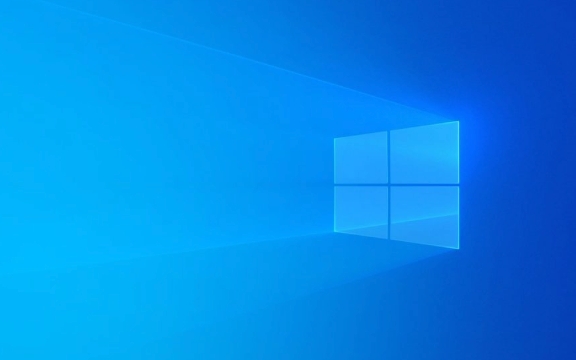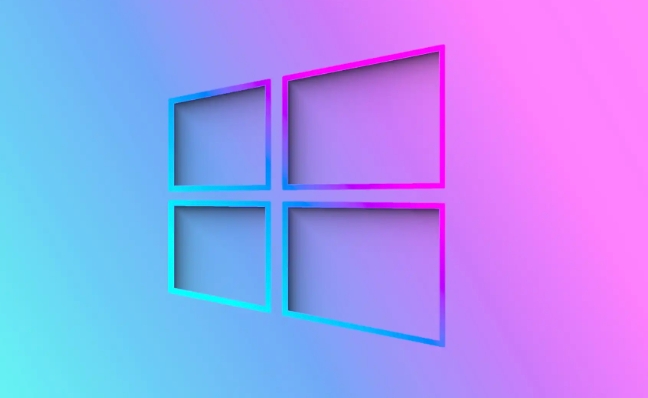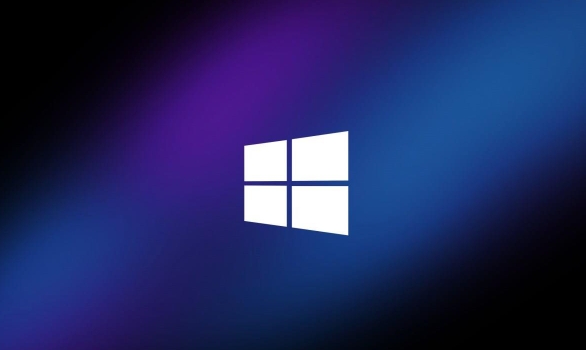First, confirm that the M.2 SSD type is compatible with the motherboard and replug and unplug to ensure that the installation is firm; 2. Enter the BIOS/UEFI to enable the M.2 slot and set it to NVMe or Auto mode, and update the BIOS if necessary; 3. Check whether uninitialized disks are identified in Windows disk management, and if there is, initialize them to GPT and create a simple volume in NTFS format; 4. Update the disk drive, storage controller driver and motherboard chipset driver to ensure system support; 5. If possible, install the SSD to other devices or use the M.2 to USB adapter to test to troubleshoot hardware failures; 6. Download and run the management tools provided by the SSD manufacturer (such as Samsung Magician) for detection or firmware updates; most problems are caused by improper installation, the BIOS is not enabled or the disk is not initialized, and it can usually be solved after troubleshooting according to the steps.

If your Windows PC isn't recognizing your new M.2 SSD, don't panic — this is a common issue with several possible causes. The good news is that most of the time, it's fixed without replacing hardware. Let's walk through the key steps to diagnose and resolve the problem.

1. Check Physical Installation and Compatibility
First, make sure the M.2 SSD is properly seated and compatible with your system.
- Confirm M.2 type compatibility : M.2 drives come in different types — primarily NVMe (PCIe) and SATA . Your motherboard must support the same type. Check your motherboard manual or specs online to see which M.2 formats it supports.
- Re-seat the SSD : Power off your PC, unplug it, and remove the M.2 SSD. Reinstall it firmly, ensuring it clicks into place. A loose connection is a frequent culprit.
- Check for shared slots : Some motherboards disable SATA ports or other M.2 slots when one is in use. Double-check your motherboard manual for any such conflicts.
2. Enable the M.2 Slot in BIOS/UEFI
Sometimes the M.2 slot is disabled by default in the BIOS.

- Restart your PC and enter BIOS/UEFI (usually by pressing Del , F2 , or F12 during boot).
- Look for settings like:
- Storage > M.2 Configuration
- Advanced > NVMe Configuration
- Integrated Peripherals
- Make sure the M.2 slot is enabled .
- If there's an option for M.2 Mode , set it to NVMe (or Auto ) if you're using an NVMe drive.
- Save and exit.
?? Note: Some older BIOS versions don't recognize newer drives. Consider updating your BIOS if the SSD still isn't detected.
3. Check Disk Management in Windows
Even if the drive isn't showing up on your desktop, Windows might see it in Disk Management — it just needs to be initialized.

- Press Win X and select Disk Management .
- Look for a new disk listed as "Unknown" , "Not Initialized" , or with unallocated space .
- If found:
- Right-click the disk and choose Initialize Disk .
- Select GPT (GUID Partition Table) — recommended for UEFI systems and drives over 2TB.
- After initialization, right-click the unallocated space and create a New Simple Volume .
- Assign a drive letter and format it (NTFS is standard).
Now the drive should appear in File Explorer.
4. Update Drivers and Chipset
Outdated or missing drivers can prevent recognition.
- Open Device Manager (Win X > Device Manager).
- Look under:
- Disk drives — is your SSD listed?
- Storage controllers — ensure NVMe drivers are present.
- If the SSD shows up with a yellow warning:
- Right-click and Update driver > "Search automatically".
- Also, visit your motherboard manufacturer's website and download the latest:
- Chipset drivers
- NVMe drivers
- Storage drivers
Install them and restart.
5. Test the SSD in Another System (If Possible)
To rule out a negative drive:
- Install the SSD in another compatible PC or use an M.2 to USB adapter.
- If it's not detected there either, the drive may be faulty or dead.
Alternatively, try a known-working M.2 SSD in your PC to confirm the slot is functional.
6. Check for Firmware or Manufacturer Tools
Some SSDs (especially from brands like Samsung, WD, Crucial) requires specific tools or firmware updates to work properly.
- Visit the SSD manufacturer's website.
- Download their SSD management software (eg, Samsung Magician, WD Dashboard).
- These tools can help detect, initialize, or update firmware on the drive.
Final Thoughts
Most M.2 SSD detection issues come down to:
- Incorrect installation
- BIOS settings
- Drive not initialized in Disk Management
- Compatibility mismatches
Start with the basics — reset the drive, check BIOS, then Disk Management. In most cases, that's all it takes.
Basically, don't assume the SSD is dead — it's more likely a software or setup issue.
The above is the detailed content of my win pc is not recognizing my new m.2 ssd. For more information, please follow other related articles on the PHP Chinese website!

Hot AI Tools

Undress AI Tool
Undress images for free

Undresser.AI Undress
AI-powered app for creating realistic nude photos

AI Clothes Remover
Online AI tool for removing clothes from photos.

Clothoff.io
AI clothes remover

Video Face Swap
Swap faces in any video effortlessly with our completely free AI face swap tool!

Hot Article

Hot Tools

Notepad++7.3.1
Easy-to-use and free code editor

SublimeText3 Chinese version
Chinese version, very easy to use

Zend Studio 13.0.1
Powerful PHP integrated development environment

Dreamweaver CS6
Visual web development tools

SublimeText3 Mac version
God-level code editing software (SublimeText3)

Hot Topics
 Windows Security is blank or not showing options
Jul 07, 2025 am 02:40 AM
Windows Security is blank or not showing options
Jul 07, 2025 am 02:40 AM
When the Windows Security Center is blank or the function is missing, you can follow the following steps to check: 1. Confirm whether the system version supports full functions, some functions of the Home Edition are limited, and the Professional Edition and above are more complete; 2. Restart the SecurityHealthService service to ensure that its startup type is set to automatic; 3. Check and uninstall third-party security software that may conflict; 4. Run the sfc/scannow and DISM commands to repair system files; 5. Try to reset or reinstall the Windows Security Center application, and contact Microsoft support if necessary.
 PEAK Voice Chat Not Working on PC: Check This Stepwise Guide!
Jul 03, 2025 pm 06:02 PM
PEAK Voice Chat Not Working on PC: Check This Stepwise Guide!
Jul 03, 2025 pm 06:02 PM
Players have been experiencing the PEAK voice chat not working issue on PC, impacting their cooperation during climbs. If you are in the same situation, you can read this post from MiniTool to learn how to resolve PEAK voice chat issues.Quick Navigat
 Windows stuck on 'undoing changes made to your computer'
Jul 05, 2025 am 02:51 AM
Windows stuck on 'undoing changes made to your computer'
Jul 05, 2025 am 02:51 AM
The computer is stuck in the "Undo Changes made to the computer" interface, which is a common problem after the Windows update fails. It is usually caused by the stuck rollback process and cannot enter the system normally. 1. First of all, you should wait patiently for a long enough time, especially after restarting, it may take more than 30 minutes to complete the rollback, and observe the hard disk light to determine whether it is still running. 2. If there is no progress for a long time, you can force shut down and enter the recovery environment (WinRE) multiple times, and try to start repair or system restore. 3. After entering safe mode, you can uninstall the most recent update records through the control panel. 4. Use the command prompt to execute the bootrec command in the recovery environment to repair the boot file, or run sfc/scannow to check the system file. 5. The last method is to use the "Reset this computer" function
 Proven Ways for Microsoft Teams Error 657rx in Windows 11/10
Jul 07, 2025 pm 12:25 PM
Proven Ways for Microsoft Teams Error 657rx in Windows 11/10
Jul 07, 2025 pm 12:25 PM
Encountering something went wrong 657rx can be frustrating when you log in to Microsoft Teams or Outlook. In this article on MiniTool, we will explore how to fix the Outlook/Microsoft Teams error 657rx so you can get your workflow back on track.Quick
 The RPC server is unavailable Windows
Jul 06, 2025 am 12:07 AM
The RPC server is unavailable Windows
Jul 06, 2025 am 12:07 AM
When encountering the "RPCserverisunavailable" problem, first confirm whether it is a local service exception or a network configuration problem. 1. Check and start the RPC service to ensure that its startup type is automatic. If it cannot be started, check the event log; 2. Check the network connection and firewall settings, test the firewall to turn off the firewall, check DNS resolution and network connectivity; 3. Run the sfc/scannow and DISM commands to repair the system files; 4. Check the group policy and domain controller status in the domain environment, and contact the IT department to assist in the processing. Gradually check it in sequence to locate and solve the problem.
 The requested operation requires elevation Windows
Jul 04, 2025 am 02:58 AM
The requested operation requires elevation Windows
Jul 04, 2025 am 02:58 AM
When you encounter the prompt "This operation requires escalation of permissions", it means that you need administrator permissions to continue. Solutions include: 1. Right-click the "Run as Administrator" program or set the shortcut to always run as an administrator; 2. Check whether the current account is an administrator account, if not, switch or request administrator assistance; 3. Use administrator permissions to open a command prompt or PowerShell to execute relevant commands; 4. Bypass the restrictions by obtaining file ownership or modifying the registry when necessary, but such operations need to be cautious and fully understand the risks. Confirm permission identity and try the above methods usually solve the problem.
 the default gateway is not available Windows
Jul 08, 2025 am 02:21 AM
the default gateway is not available Windows
Jul 08, 2025 am 02:21 AM
When you encounter the "DefaultGatewayisNotAvailable" prompt, it means that the computer cannot connect to the router or does not obtain the network address correctly. 1. First, restart the router and computer, wait for the router to fully start before trying to connect; 2. Check whether the IP address is set to automatically obtain, enter the network attribute to ensure that "Automatically obtain IP address" and "Automatically obtain DNS server address" are selected; 3. Run ipconfig/release and ipconfig/renew through the command prompt to release and re-acquire the IP address, and execute the netsh command to reset the network components if necessary; 4. Check the wireless network card driver, update or reinstall the driver to ensure that it works normally.
 How to fix 'SYSTEM_SERVICE_EXCEPTION' stop code in Windows
Jul 09, 2025 am 02:56 AM
How to fix 'SYSTEM_SERVICE_EXCEPTION' stop code in Windows
Jul 09, 2025 am 02:56 AM
When encountering the "SYSTEM_SERVICE_EXCEPTION" blue screen error, you do not need to reinstall the system or replace the hardware immediately. You can follow the following steps to check: 1. Update or roll back hardware drivers such as graphics cards, especially recently updated drivers; 2. Uninstall third-party antivirus software or system tools, and use WindowsDefender or well-known brand products to replace them; 3. Run sfc/scannow and DISM commands as administrator to repair system files; 4. Check memory problems, restore the default frequency and re-plug and unplug the memory stick, and use Windows memory diagnostic tools to detect. In most cases, the driver and software problems can be solved first.






